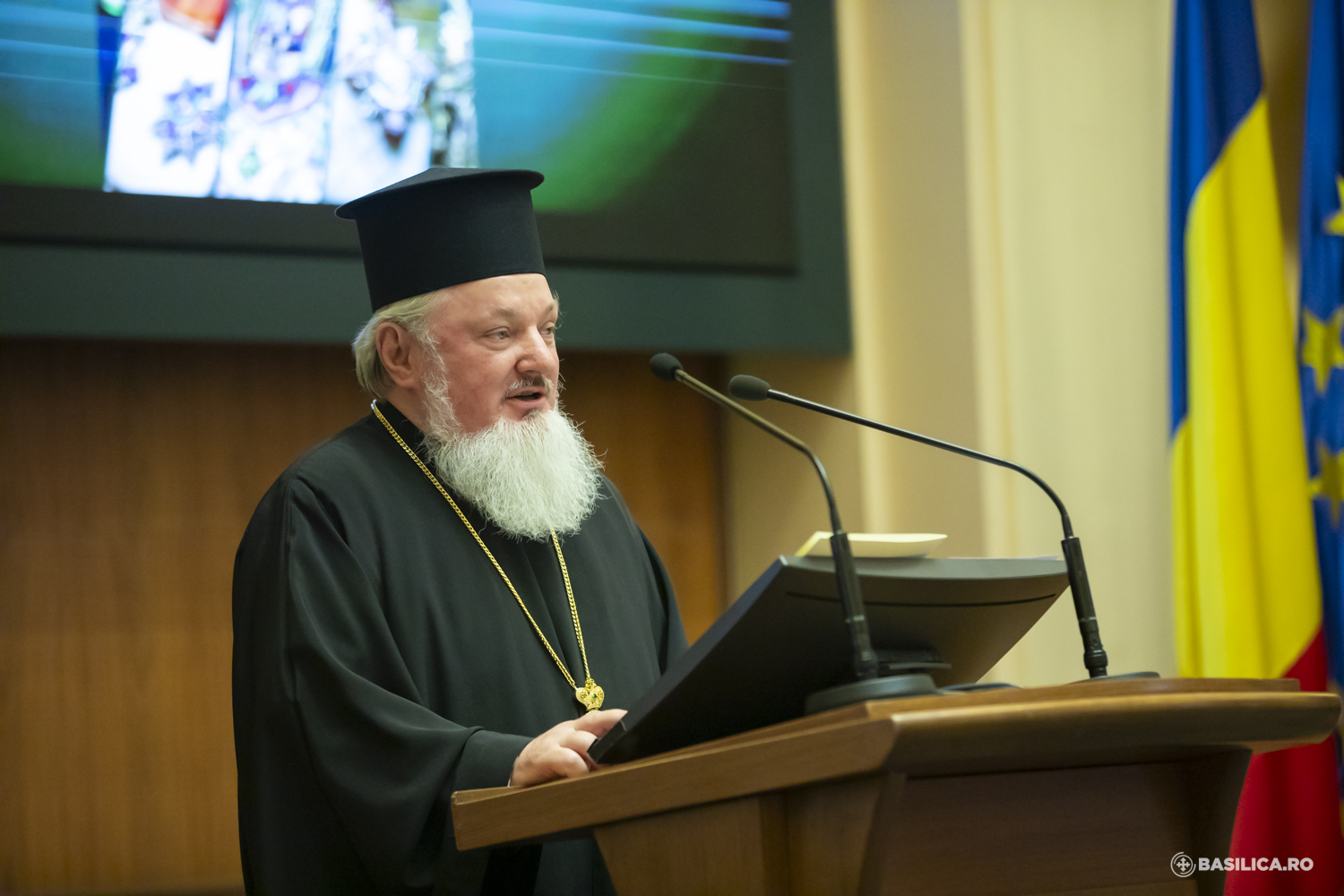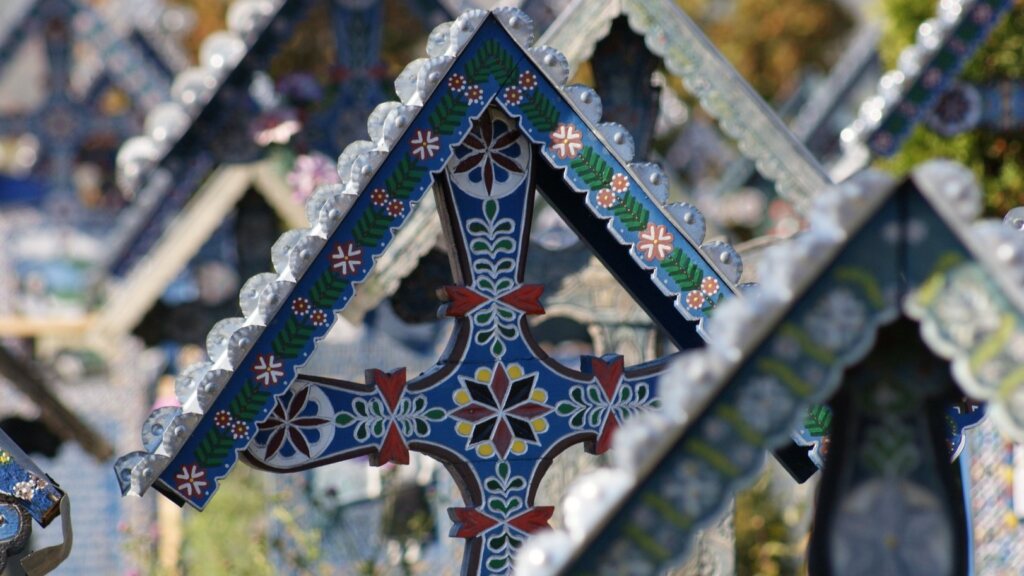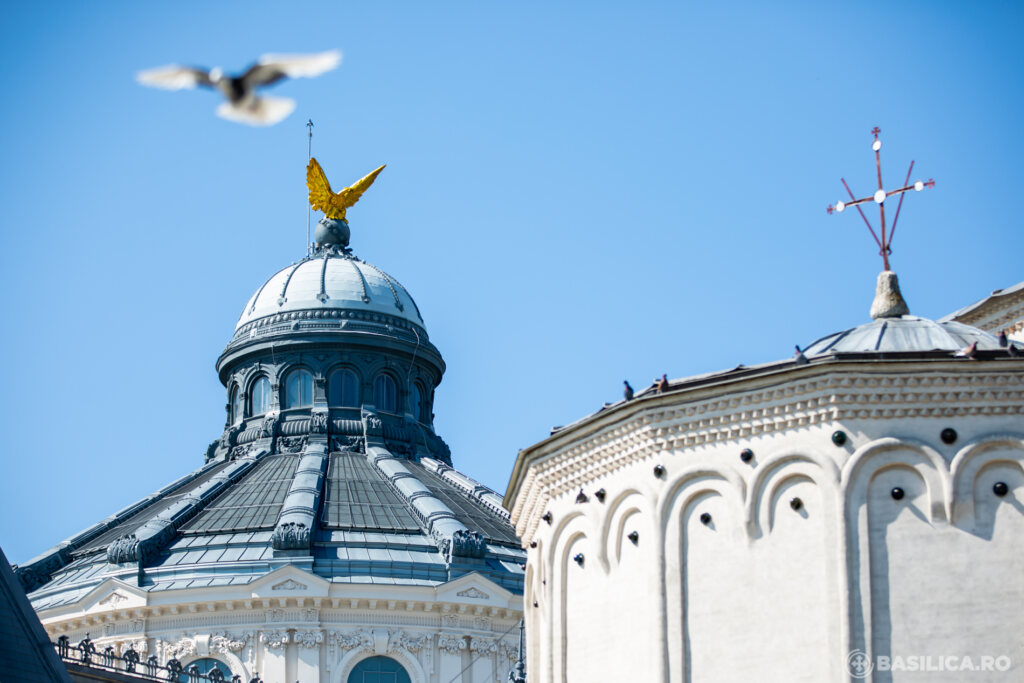“The Centenary of the ‘King Ferdinand I’ National Military Museum is an opportunity to reflect on honouring Romanian heroes,” transmitted the Patriarch Daniel on Thursday.
“The exhibition concept of the National Military Museum makes us contemporary with many of the events through which the Romanian people passed with bravery, courage and faith in God,” His Beatitude said in the message transmitted on the Centenary of this museum.
The Patriarch of Romania emphasized that the museum, together with the Tomb of the Unknown Soldier in Bucharest’s “Carol I” Park and the National Cathedral that is being built – also in the Capital city of Romania – “constitute three invaluable urban landmarks that speak of our historical past, of our duty to honour our heroes, but also of our degree of civilisation as a people, because a nation that does not forget its past, but responsibly assumes the dreams and beliefs of its ancestors, remembering them with gratitude, is a nation of true integrity and dignity”.
His Grace Varlaam of Ploiești delivered the message of the Patriarch during an event organized by the National Bank of Romania on Thursday. The institution also launched a numismatic issue dedicated to the Centenary of the “King Ferdinand I” National Military Museum.
Full text:
The Centenary of the “King Ferdinand I” National Military Museum is an opportunity to reflect on honouring Romanian heroes
Today, we are in a place full of history, with strong spiritual, cultural, social and political resonance. On the current site of the National Bank of Romania, between 1683 and 1686, Prince Șerban Cantacuzino built an inn that would bear his name, known as the Șerban Vodă Inn. This inn was dedicated by the prince to the Cotroceni Monastery, having the status of metochion. A church was built by merchants within the inn in the early 18th century. In time, this settlement entered the collective mind as the Holy Monastery of Great Martyr George, from the Șerban Vodă Inn [1] or, in short, as Șerban Vodă Monastery.
Therefore, this place, which is so important, has been sanctified through a monastery dedicated to Great Martyr George, bearer of victory and patron of the Romanian Army land forces. This place is so suitable for remembrance and is befitting that we remember those who gave their lives for the freedom and dignity of the Romanian people.
The initiative of the National Bank of Romania to issue, through its numismatic program, a silver coin for collectors on the occasion of the Centenary of the “King Ferdinand I” National Military Museum is inspirational, elegantly marking the 100th year in the history of this museum, whose collections bring us closer to the deeds of bravery and heroism of Romanian soldiers.
The exhibition concept of the National Military Museum makes us contemporary with many of the events through which the Romanian people passed with bravery, courage and faith in God. Admiring its collections, we can trace the Christian mission both within the Romanian Army and in the history of the Romanians in general, since the Church and the Army have always been in a harmonious relationship, supporting the Romanian people, which has been so much tested by the adversity of the times.
In Romania’s National Anthem, the poet Andrei Mureşanu managed to capture the historical reality characterizing the Romanian Church and Army throughout the centuries: Priests, lead with your crucifixes! Because our army is Christian. This verse shows us that the priests have been with the Romanian soldiers in all the wars, not only figuratively, but also literally. Not only for their encouragement and for the services performed behind the front lines, but even on the battlefield, in the trenches. During the wars, some of them performed heroic acts recognised as such by history, because you can be a hero even when you do not carry a weapon.
From ancient times, the morale of the soldiers on the battlefield has been supported by the spiritual guidance offered by priests. The clerics present on the front confessed the soldiers, gave them the Holy Communion, encouraged them in their difficult trials, cared for the wounded together with the nuns of the monasteries, remembered them in prayer, and buried those who died on the battlefields with the honour befitting heroes. After the end of the battles, they erected churches, crosses and monuments to their eternal remembrance, thus showing gratitude and honour for their love and for the fact that they gave their lives for the freedom and unity of the Romanian people.
From its foundation, in addition to the military objects exhibited, the other mission of the National Military Museum was to present the historical past of the Romanian people. Thus, this institution also has a commemorative function: honouring the heroes of the nation. This significant fact was established when the authorities decided that the Tomb of the Unknown Soldier, a symbol of national sacrifice and heroism, should be placed in front of the museum that was built in “Carol I” Park. In this way, the museum and the tomb in front of it became a place of pilgrimage, a place where people not only gained knowledge about the past, but also came closer to the bones of the unknown hero – and, through him, to all the heroes who died on the battlefields -, praying with gratitude for their names from generation to generation.
This beautiful association between the museum and the Tomb of the Unknown Soldier was, however, affected by a fire which burned down a large part of the museum’s central building on the morning of June 15, 1938. Wishing to erase from the memory of the people the enduring principles of the Romanian people, which the Tomb of the Unknown Soldier silently recalled, the Communists moved it to the Mărășești Memorial on the night of December 22 to 23, 1958. After the 1989 Revolution, on October 26, 1991, the coffin of the unknown hero was returned to “Carol I” Park in Bucharest, thus making moral reparation and an act of justice and national dignity.
The Military Museum, however, after several relocations, at the end of 1986, was placed in its current location on Bucharest’s Mircea Vulcănescu Street, in a building which was erected at the end of the 19th century and previously served as a garrison residence.
It should be mentioned on this occasion that, through Our care, the Cathedral of the Salvation of the Nation is in the process of being built, a church symbol of the independence of the Romanian people, in which religious ceremonies of national public character have been and will be organized, one of the cathedral’s patronal feasts being the Ascension of the Lord – Heroes’ Day. It is also worth mentioning that the first religious service celebrated in the National Cathedral was a memorial service for all the heroes of the Romanian nation, held on November 24, 2018, on the eve of the consecration of the shrine’s altar. On this occasion, We underlined the symbolic value of this cathedral built in honour of the Romanian heroes who gave their lives for the defence of the country, by placing, inside the foot of the Holy Table, the names of all known heroes of the Independence War, the Balkan Wars, the First and Second World Wars.
Thus, although the three locations are not located on the same site, they constitute three invaluable urban landmarks that speak of our historical past, of our duty to honour our heroes, but also of our degree of civilisation as a people, because a nation that does not forget its past, but responsibly assumes the dreams and beliefs of its ancestors, remembering them with gratitude, is a nation of true integrity and dignity.
At this anniversary time, when we celebrate 100 years of existence of the “King Ferdinand I” National Military Museum, We would like to express Our appreciation and blessing to all the supporters of this cultural institution.
At the same time, we would like to address words of appreciation and blessing to the National Bank of Romania, which every year issues, through its numismatic program, in collaboration with the Church and other institutions of the Romanian state, coins and medals designed to highlight important milestones in the historical past of the Romanian people.
We pray to God to grant you all long years and much help in the work you are doing in the service of the right-believing people and of our Christ-loving Army.
With paternal blessings,
† DANIEL
Patriarch of the Romanian Orthodox Church
Note
[1] Alexandru Elian, Inscripțiile medievale ale României. Orașul București, voi. I, București, Editura Academiei R.S.R., 1965, p. 241.
PhPatrisroto credit: Basilica.ro / Mircea Florescu
Follow us on Twitter: @BasilicaNews






